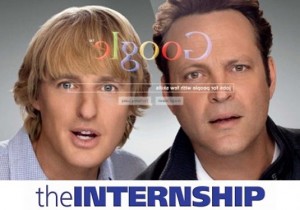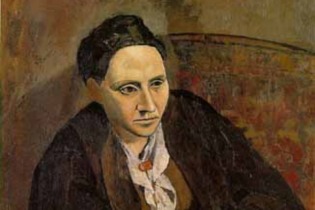This film review of “This is the End” appeared in the Australian Jewish News on 18 July 2013.
(Written and directed by Seth Rogen and Evan Goldberg)
The thing you have to know about the new film “This is the End” is that it’s made by twentysomething guys for twentysomething guys. The further you fall outside this demographic, the less appealing “This is the End” is likely to be.
The set-up is part of the fun – and yes, the film is very funny, in a cerebral, gross-out, post-adolescent take-it-to-the-max kind of way. It goes like this: actor Jay Baruchel arrives at Los Angeles to hang out with his old friend Seth Rogen. We realise early on that these guys are playing versions of themselves, when someone walking past asks, ”Hey, Seth Rogen, what up, man?” and another says, “You always play the same guy in every movie. When are you going to do some acting?”
After Rogen and Baruchel go to Rogen’s house to spend the afternoon getting stoned and horsing around, Rogen convinces Baruchel to come with him to a party at James Franco’s house. There a “who’s who” cast of the current Hollywood “brat pack” (all playing themselves) dance, take drugs and have casual sexual encounters – just the sort of thing you would expect of a Hollywood party filled with the beautiful, young, rich and famous.
Aside from Franco, proud of his fortress-like house with its modern art collection, we see African-American comic Craig Robinson, Jonah Hill, Emma Watson, Michael Cera, Rihanna, Jason Segel, David Krumholtz, Paul Rudd, Mindy Kaling, Martin Starr, Kevin Hart, Christopher Mintz-Plasse, Aziz Ansari and Evan Goldberg. We are also introduced to a number of (presumably fictional) “in-jokes”: youthful innocent Cera is, in reality, horny, sexually aggressive and nasty; Baruchel and Rogen, childhood Canadian friends, are attempting to re-kindle their “bromance” friendship; and all of the party-goers are, without exception, fabulously self-absorbed in a “Seinfeld” type of way.
Hollywood actors are easily satirised, and “This is the End” finds many different ways to do so. Everyone unashamedly keeps referring to their own movies: when Jonah Hill decides to pray, he says, “Dear God, this is Jonah Hill, from ‘Moneyball’”.
After the comic introduction comes the turn to horror: something like the apocalypse takes place, with some people beamed up to heaven in blue light, others falling into massive sinkholes and Los Angeles exploding into fire. Only Rogen, Baruchel, Franco, Hill and Robinson remain marooned in Franco’s house, joined by comedian Danny McBride, who steadfastly refuses to play any games of being nice.
“This is the End” falls squarely into the “comedy-horror” genre with many influences, from “Rosemary’s Baby” and “The Exorcist” to “Zombieland”, “Ghostbusters” and “Shaun of the Dead”, with dashes of the apocalyptic end of the world: think “2012” and “Earthquake”. But “This is the End” goes one step further, introducing themes from the “Book of Revelations” (the last book in New Testament), complete with horned fiery beasts; along with elements of the Christian concept of “Rapture”, as commonly used by Christian fundamentalists, especially in the USA.
These Christian themes appear odd, given that “This is the End” was co-written and co-directed by Seth Rogen and Evan Goldberg, both of them Jewish – and that at least half the major characters, including Hill (born Feldstein) and Franco, are also Jewish (and in fact even Baruchel’s paternal grandfather was Jewish). It’s hard to tell what religious points “This is the End” is trying to make. Despite the funny monsters, the film seems to take the Christian concept of self-sacrifice seriously (it’s how you get to heaven). There’s probably no deeper meaning in these religious symbols; they are really more of an excuse to introduce the “end of the world” action. But I wondered.
Despite the presence of so many well-known stars, the real acting honours in “This is the End” go to Danny McBride and Craig Robinson, who both seem to inhabit their roles (such as they are) with good dramatic effect. Rogen plays Rogen, Franco is uncharacteristically subdued and Jonah Hill is given a ridiculous “zombie possessed” scene. Perhaps I expected too much? If you like this sort of movie, then “This is the End” is a must-see; young people seem to love it, and it’s even funnier with a large audience. If this genre is not your thing, give it a miss.
Rogen, Goldberg and Baruchel had apparently been thinking about “This is the End” for many years, and in 2007 they shot and released a one and a half minute trailer on YouTube entitled “Jay and Seth vs. The Apocalypse”. The trailer is still there, with more than 655,000 views.

(Footnote: I was asked to rate this film for the Jewish News publication, and found that terribly difficult. I gave it 4 stars – out of 5 – for young people, but only 2 stars for the older demographic. Thus an average of 3/5.)
 (Photo: Sydney’s North Shore on garbage pick-up day)
(Photo: Sydney’s North Shore on garbage pick-up day)


 Posted by donperlgut
Posted by donperlgut 







